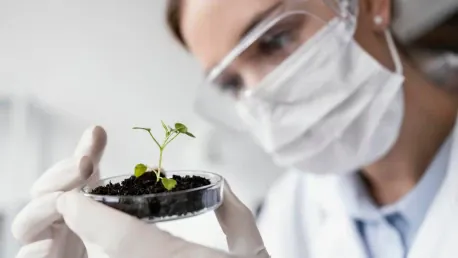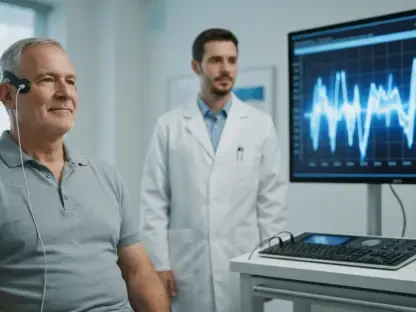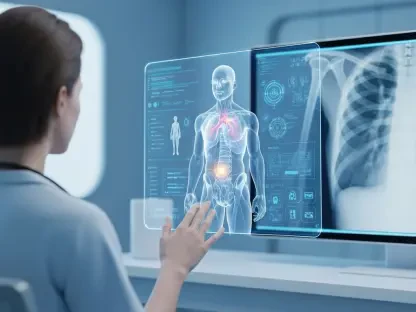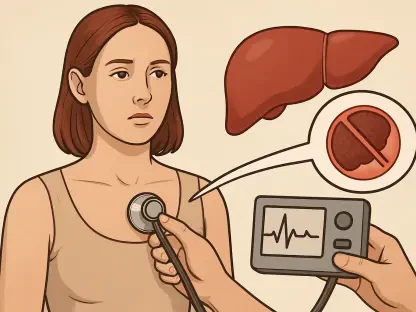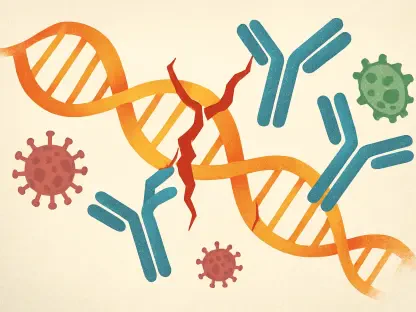In the quest for a sustainable future, the bioeconomy emerges as a significant solution, aiming to replace finite petrochemical resources with renewable resources produced by living organisms. This vision is driven by the need to create a circular economy where products and materials are fully recyclable, facilitated through the unique metabolic processes of microbes. This article delves into innovative strategies and genetic engineering techniques that aim to transform microbes into industrial powerhouses capable of producing biodegradable plastics and fuels, thus demonstrating their potential in promoting sustainability.
The Promise of a Bioeconomy
The bioeconomy represents a paradigm shift from reliance on non-renewable petrochemical resources to harnessing renewable resources derived from living organisms. Achieving such a transition is critical for sustainability as it reduces dependency on finite resources and minimizes the environmental footprint. Central to the bioeconomy is the principle of circularity, which conceives a sustainable cycle where products and materials are recycled continuously, with microbes playing a pivotal role in this perpetuation.
Microbes boast extensive metabolic capabilities that align well with the goals of the bioeconomy. However, many microorganisms naturally lack the genetic tools necessary for industrial applications. This presents a significant challenge that must be addressed through advances in microbial engineering. By developing efficient microbial processes tailored for industrial applications, these microbes can be instrumental in driving the bioeconomy forward and reducing our reliance on petrochemical resources.
The concept of circularity envisions an industry where waste materials are continually repurposed, facilitated by microbes’ unique metabolic processes. This biotechnological approach not only supports the recycling of products and materials but also mitigates environmental impact. Through microbial engineering, non-renewable resources can be replaced with renewable ones. As microbes convert biomass into useful products, such advancements foster a more sustainable industrial landscape.
Consolidated Bioprocessing (CBP)
One significant approach within microbial engineering is Consolidated Bioprocessing (CBP). CBP involves packaging the complete set of metabolic functions needed for breaking down biomass and converting it into usable products within a single organism. This method aims to streamline industrial processes and reduce associated costs significantly, representing a groundbreaking step towards efficient biomass utilization.
The development of a CBP organism requires extensive genetic engineering to ensure that all necessary genes for diverse metabolic functions are present in one organism. Natural organisms often lack the full genetic repertoire required for such tasks, necessitating the combination of multiple functions within a single, efficient microorganism. This engineered organism, known as the chassis, serves as the foundation for further genetic modifications, reinforcing the capabilities needed for effective bioprocessing.
Choosing and developing an appropriate chassis organism is pivotal. The ideal chassis must be capable of thriving under specific industrial conditions, such as varying temperatures and exposure to potentially toxic byproducts. While well-studied model organisms like Escherichia coli and Bacillus subtilis offer established genetic protocols, unique industrial requirements often necessitate the utilization of less familiar, non-model organisms. These non-model organisms, despite their advantages, introduce additional challenges that must be addressed through meticulous genetic engineering strategies.
Selecting Chassis Organisms
The selection of an ideal chassis organism is crucial in developing efficient CBP systems. This process involves assessing various factors like the environmental conditions under which the organism will operate, including temperature variations and the potential toxicity of byproducts. Although model organisms like Escherichia coli and Bacillus subtilis are well-studied with established genetic engineering protocols, specific industrial requirements drive researchers towards using less common, non-model organisms.
Non-model organisms offer unique advantages for certain industrial applications, such as a natural tolerance to harsh conditions or the ability to metabolize unusual substrates. These characteristics make them appealing for specific bioprocessing tasks. However, these organisms often lack the comprehensive genetic tools and protocols available for model organisms, posing additional hurdles for genetic engineering efforts. Overcoming these hurdles requires tailored approaches to unlock their full potential for industrial use.
Researchers must balance the trade-offs between model and non-model organisms when selecting a chassis. While model organisms benefit from extensive research and well-established genetic manipulation techniques, non-model organisms can offer specialized traits that are beneficial for particular applications. The choice of chassis organism thus becomes a strategic decision, taking into account the specific requirements and challenges of the intended application.
Genetic Engineering Strategies
To create efficient CBP organisms, several genetic engineering strategies must be employed. One crucial strategy is DNA uptake, which involves the introduction of foreign genetic material into a microbe’s genome. There are various methods for DNA uptake, including electroporation, conjugation, and native competence. Each method has its own advantages and limitations, requiring careful selection based on the target organism and desired genetic modifications.
After introducing foreign DNA, ensuring its stable maintenance within the host organism is vital. This process involves integrating the new genetic material so that it can be replicated, transcribed, and expressed as part of the organism’s natural biological functions. However, bacteria have defense mechanisms, such as restriction modification systems, that often degrade non-native DNA, complicating the integration and maintenance efforts. Therefore, overcoming these natural defense systems is a key challenge in genetic engineering.
Restriction modification systems enable bacteria to differentiate self from non-self DNA through methylation patterns. To bypass these defense mechanisms, researchers must characterize the restriction modification system of the recipient organism and modify the DNA methylation patterns to align with the host. This alignment helps prevent degradation and ensures the desired genetic material is maintained within the microbial genome, allowing for successful genetic modifications.
Overcoming Genetic Engineering Hurdles
One of the main hurdles in microbial genetic engineering is overcoming restriction modification systems, which help bacteria differentiate between their own DNA and foreign DNA by recognizing specific methylation patterns. When working with these systems, engineering efforts must include detailed characterization of the recipient organism’s restriction modification system, followed by the modification of DNA methylation to align with the host’s patterns. This approach helps bypass these defense mechanisms and allows the introduced DNA to be maintained and expressed within the host.
Another significant challenge is marker selection and integration. Industrial applications often avoid plasmid-based gene expression systems due to their reliance on antibiotic markers, which are not only costly but may also pose regulatory issues. Instead, genes are integrated directly into the host genome, ensuring stable and persistent expression. Techniques such as Serine-Integrase Assisted Genome Engineering (SAGE) enable the efficient and precise integration of genetic cargo into specific genome sites. This method proves particularly beneficial for non-model organisms, where traditional genetic tools are less accessible.
SAGE and similar techniques facilitate the integration of essential genes into non-model organisms, enhancing their utility for industrial applications. These methods allow researchers to create robust and efficient microbial systems capable of performing complex tasks under process-specific conditions. By developing and implementing these advanced genetic engineering strategies, the potential for microbes to contribute significantly to a sustainable bioeconomy becomes increasingly attainable.
Future Potential and Trends
In the pursuit of a sustainable future, the bioeconomy appears as a viable solution, aiming to replace finite petrochemical resources with renewable ones derived from living organisms. This forward-thinking approach is motivated by the need to establish a circular economy, where products and materials can be fully recycled. The unique metabolic processes of microbes play a pivotal role in this endeavor.
The article explores innovative strategies and advanced genetic engineering techniques designed to transform microbes into industrial powerhouses. These engineered microbes have the potential to produce biodegradable plastics and renewable fuels, showcasing their significant contributions toward sustainability. By harnessing the metabolic capabilities of these microorganisms, it’s possible to create materials and energy sources that are far less damaging to the environment compared to traditional petrochemical products.
This vision of the bioeconomy not only aims to reduce the reliance on non-renewable resources but also to mitigate environmental pollution. The ability of genetically engineered microbes to produce sustainable alternatives is a testament to the power of biotechnology in addressing global ecological challenges. As the world continues to grapple with climate change and resource depletion, the bioeconomy offers a promising path forward, encouraging the use of resources that can be renewed and recycled, ultimately contributing to a healthier planet.
